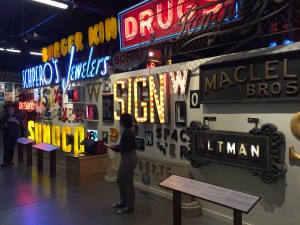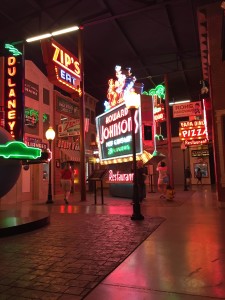 Combining a demographic that thrives on distraction with an animal that moves like a snail seems like a recipe for disaster. Teenagers and turtles, without the benefit of a ninja rat? Yet our visit to the Live Turtle and Tortoise Museum in Singapore one rainy afternoon turned out to be a great success.
Combining a demographic that thrives on distraction with an animal that moves like a snail seems like a recipe for disaster. Teenagers and turtles, without the benefit of a ninja rat? Yet our visit to the Live Turtle and Tortoise Museum in Singapore one rainy afternoon turned out to be a great success.

World record holders
The museum was started in 2001 by Mr. Danny Tan to house his collection of live tortoises and turtles. If you’re wondering how many turtles there are, it’s hard to say. Every source that I’ve consulted had a different total. The simplest answer is – the most in the world. Don’t believe me? They hold the Guinness world record for the largest collection of tortoises and turtles. The museum lies inside the Chinese Garden, a scenic park in the middle of Jurong Lake in Singapore. I read about the museum in Kelvin Ang’s great book, Got Kids, Go Where? and it seemed like a good choice for an outdoor activity with the kids. The weather was overcast but we didn’t let that stop us as we strolled south from the MRT stop and across the bridge.
Entrance to the Chinese Garden is free. Entrance to the museum costs S$5 for adults and S$3 for kids under the age of 6. My youngest was thrilled to be considered an adult for once. There is the obligatory gift shop co-located with the entrance.

Turtle feeding frenzy
This small museum can easily be toured in an hour. You could spend longer, but I would guess the extra time would be spent feeding turtles on the wooden bridge that spans the small pond inside the museum. This is where hundreds of turtles await you. They know that visitors sometimes buy bundles of veggies to feed them (S$2 at the front counter) and they rush the bridge to greet you. Some would say rush is not the right word, but turtles are surprisingly fast in the water. Especially when there’s food to be had. Be careful doling out the veggies though, they won’t distinguish between a leaf and a finger until it’s too late. A few turtles will even amble onto the bridge to get to the front of the line for treats. Although you can feed other turtles and tortoises in the museum, most of the action takes place on the bridge.
Many other species of turtles are housed in individual aquariums along the wall of the compound, such as the funny looking pig-nosed turtle of Australia and the American alligator snapping turtle. Although they’re all reptiles, there are differences between turtles, terrapins, and tortoises.Turtles have webbed feet and spend most of their lives in water. Terrapins split their time between water and land. Tortoises live on land, usually in hot, dry climates, and do not have webbed feet.

Up close with a tortoise
One of the most interesting things to me was how quiet the museum is. Turtles aren’t known for being noisy (except of course the teenage mutant ninja variant). If you weren’t watching your step, you’d trip over a few of the larger tortoises making their way along the path.
Turtles are associated with long life in Chinese culture, which explains why they’re considered lucky. We were lucky to find this little chelonian sanctuary in Singapore. The boys enjoyed feeding them, and I enjoyed getting an up close look at these gentle guys.










